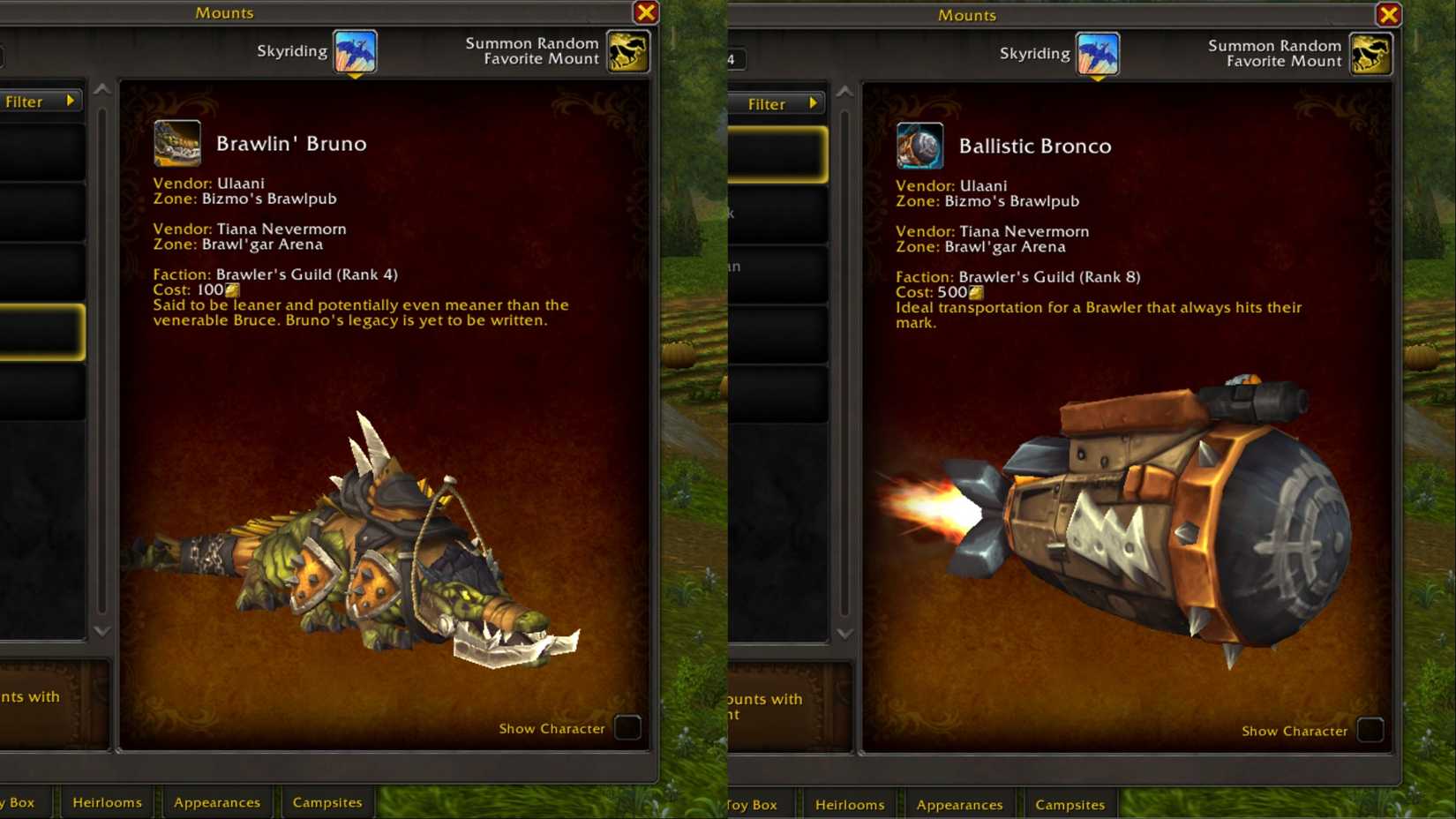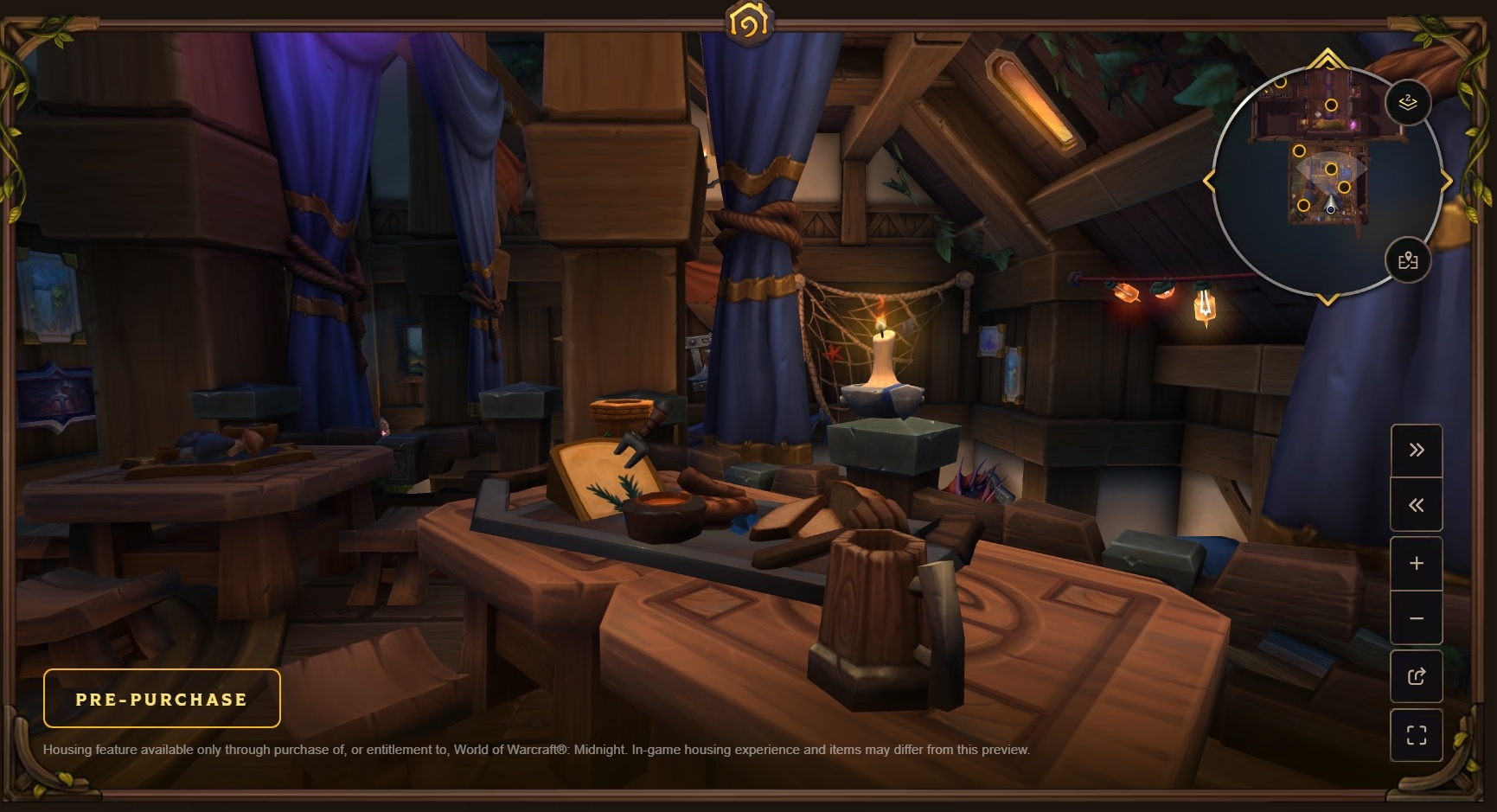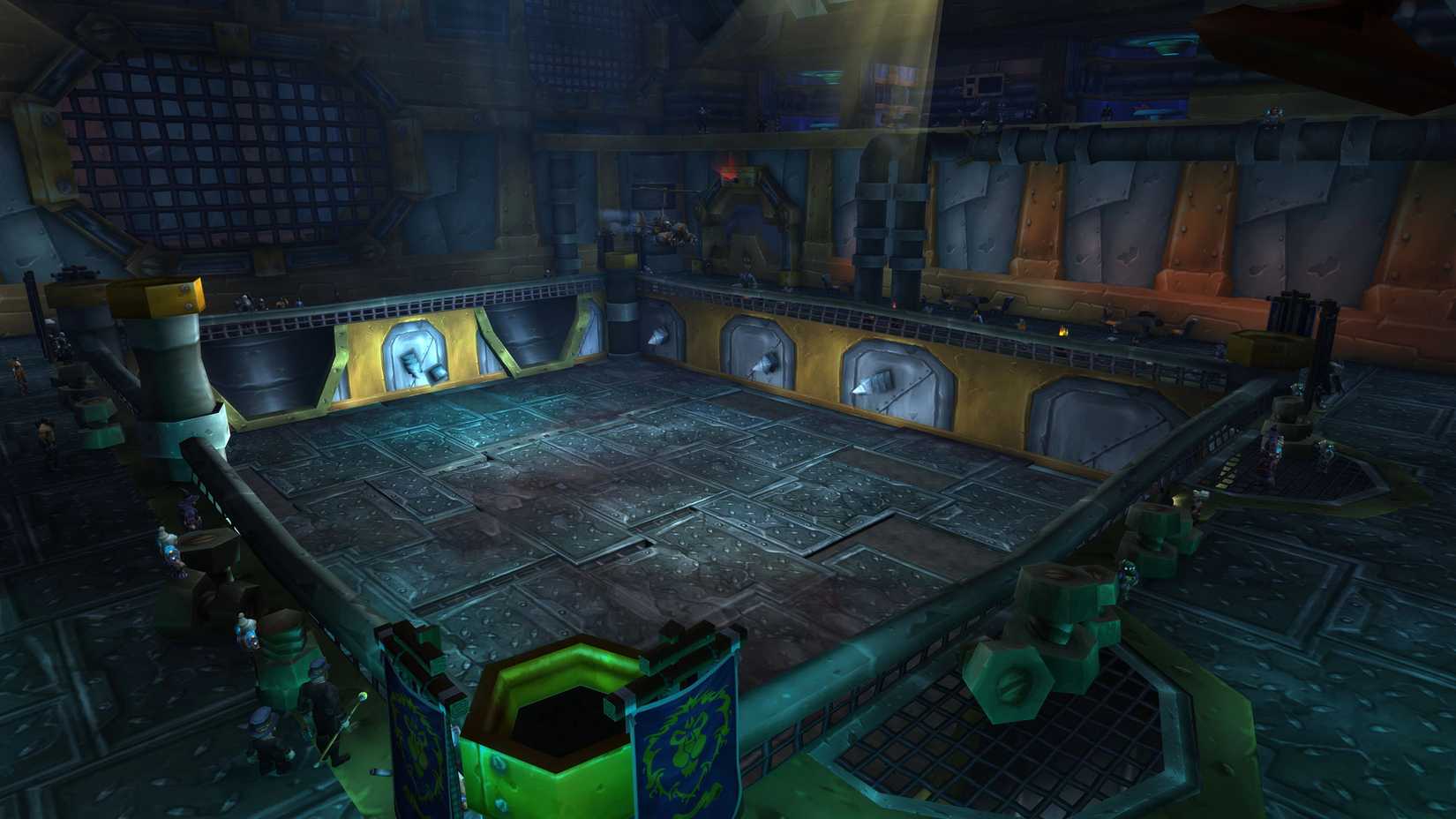The Shifting Meta: Why WoW’s Next Expansion Is Re-Writing the Rulebook for Essential Combat Addons
Popular Now
 Toca Boca World
Toca Boca World
 Brawl Stars
Brawl Stars
 BeamNG.drive
BeamNG.drive
 Valorant
Valorant
 Gacha Club
Gacha Club
 Grand Theft Auto V
Grand Theft Auto V
 Free Fire Max
Free Fire Max
 NBA 2K24
NBA 2K24
 Free Fire
Free Fire
 Geometry Dash
Geometry Dash
 The landscape of high-level gameplay in World of Warcraft is on the brink of a massive transformation, a monumental shift heralded by the upcoming WoW: Midnight expansion. For years, the endgame—from Mythic+ dungeons to the most challenging raids—has been inextricably linked to a suite of essential third-party modifications, most notably WeakAuras and Deadly Boss Mods (DBM). However, recent announcements from Blizzard Entertainment confirm a new development philosophy that aims to fundamentally break the core real-time functionality of these ubiquitous combat aids, effectively “killing” their mandatory status and resetting the competitive dynamic of the entire game.
The landscape of high-level gameplay in World of Warcraft is on the brink of a massive transformation, a monumental shift heralded by the upcoming WoW: Midnight expansion. For years, the endgame—from Mythic+ dungeons to the most challenging raids—has been inextricably linked to a suite of essential third-party modifications, most notably WeakAuras and Deadly Boss Mods (DBM). However, recent announcements from Blizzard Entertainment confirm a new development philosophy that aims to fundamentally break the core real-time functionality of these ubiquitous combat aids, effectively “killing” their mandatory status and resetting the competitive dynamic of the entire game.
This aggressive move is not a simple ban but a technical restructuring of the game’s combat Application Programming Interface (API), which is set to arrive as early as the Midnight pre-patch. The goal, as stated by developers, is to address the long-running “arms race” where encounter designers created increasingly complex mechanics assuming players had addons, forcing players to rely on those same addons to succeed. This created a significant and unwelcome barrier to entry for many users, which Blizzard is now committed to dismantling.
The Core of the Conflict: WeakAuras and the “Black Box” API
The most popular addon caught in the crossfire is arguably WeakAuras. This highly customizable tool allowed players to track nearly any combat event in real-time—from boss timers and cast sequences to personal debuffs and critical resource management—often automating the information processing to a degree that minimized the cognitive load of a complex fight. The very power and flexibility that made WeakAuras indispensable is what the new expansion is targeting.
Blizzard plans to implement a system involving “secret values” or a “black box” for specific, crucial combat data in endgame content. The key takeaway is this: the game’s UI and even addons can still know that a debuff or an ability is happening, and they can change the visual display (size, color, position) of that information. However, the exact, deterministic details of that event—the real-time combat data necessary for an addon to “solve” the mechanic for the player—will be restricted and inaccessible for complex, real-time logic calculations.
- Loss of Deterministic Logic: WeakAuras will no longer be able to use the real-time combat log or aura information to fire off precise, near-instantaneous alerts or instructions for complex mechanics.
- Impact on Creators: The team behind WeakAuras has publicly acknowledged the massive shift, indicating that a combat-reliant version for WoW: Midnight may not be released, which signals the end of the tool’s dominance in the raid and M+ scene.
- Focus on Base UI: This restriction forces players to rely on Blizzard’s own improved visual and auditory cues, placing the onus on the player to observe and react, rather than following automated instructions.
This development is generating significant discussion within the community. For some, it is a return to a purer form of MMORPG gameplay, where skill is defined by mastery of mechanics rather than mastery of the addon interface. For others, it represents a loss of critical quality-of-life and accessibility features that WeakAuras provided outside of high-end raiding.
 The Fate of Boss Mods: DBM and BigWigs
The Fate of Boss Mods: DBM and BigWigs
In addition to WeakAuras, dedicated boss mods like Deadly Boss Mods (DBM) and BigWigs are also directly impacted. These mods are the backbone of raiding, providing countdown timers and audio warnings for every boss ability. While the addons themselves are not being outright banned, the API changes will severely limit their ability to deliver the precise, real-time timers and alerts that players have come to expect and depend upon.
The changes will force an overhaul in how Blizzard designs encounters moving forward. The goal is to make boss fights more intuitive and “readable” using the game’s default graphics and sounds. This includes:
- Clearer Visual Telegraphs: Boss abilities, especially hazardous ground effects, will be made more visually obvious and less cluttered.
- Longer Reaction Windows: Mechanics that previously required split-second, addon-assisted reactions are expected to be retuned to provide a more human reaction time.
- In-Game Replacements: Blizzard is rolling out native functionality that will provide some of the utility lost. This includes an improved Cooldown Manager for tracking group utility and defensives, an integrated Damage Meter, and better nameplate and HUD updates for increased clarity.
The ultimate vision is a game where the default UI is a robust, competitive platform, eliminating the “mandatory download” aspect of third-party tools. This is a high-stakes gamble for the development team, as players have long been accustomed to the level of detail and customization provided by these core mods. The success of this change hinges entirely on the quality and robustness of Blizzard’s official replacements.
A New Era of Gameplay: The Midnight Features that Define the Future
While the addon controversy dominates the news cycle, the WoW: Midnight expansion itself is bringing forward significant and exciting new features that will shape the future of the game. These additions underline Blizzard’s commitment to quality-of-life improvements and a deeper sense of player agency within Azeroth.
Player Housing and Neighborhoods
One of the most requested features in the history of World of Warcraft is finally arriving: Player Housing. This is presented as more than just a novelty; it is a full-blown lifestyle system:
- Customization Depth: Players will be able to build, rotate, scale, and dye hundreds of unique decor items, allowing for unparalleled personalization.
- Social Integration: The implementation of Neighborhoods will allow groups of players (up to ~50) to live side-by-side in public or private spaces, fostering guild communes, custom RP hubs, and social interaction.
- Progression Rewards: Decor items will be earned from all aspects of the game, including raids, quests, and crafting, integrating the system into the core progression loop.
New Specialization and Race
The introduction of new playable options is always a massive event, and Midnight does not disappoint:
- Devourer Demon Hunter: A new ranged DPS specialization for Demon Hunters, trading their traditional Fel magic for powerful Void-themed cosmic energy. This spec is described as a mid-range caster that harvests soul fragments to fuel devastating Void-corrupted transformations, adding an entirely new playstyle to one of the game’s most iconic classes.
- The Haranir Allied Race: The bioluminescent Haranir, deeply connected to Azeroth’s roots, join the roster. This new race opens up new customization and lore avenues for players.
Content and Quality of Life Overhaul
Beyond the headline features, Blizzard is also focusing on core game health and content:
- New Zones: The campaign will return to the surface, exploring rebuilt and reimagined areas such as Eversong Woods and the ancestral troll homeland of Zul’Aman, alongside the chaotic, gravity-defying Voidstorm.
- PREY System: A new opt-in outdoor progression system that allows players to track powerful, unpredictable targets across the world for unique rewards.
- Transmogrification Update: Significant improvements to the transmog system are planned, addressing long-standing player requests for better customization.
The convergence of a major UI and addon-API shake-up with the introduction of highly-anticipated features like Player Housing and a new class specialization makes World of Warcraft: Midnight one of the most transformative expansions in recent history. The removal of the “mandatory addon” culture, while contentious, signals a bold new direction for encounter design and accessibility, promising a fresh, if challenging, experience for both veteran and returning players alike.
The Competitive Edge: Investing in Native Skill
For high-end players and aspiring Mythic raiders, the takeaway is clear: the most valuable investment for the next expansion will be in raw mechanical skill and map awareness, rather than in complex addon setups. The era of an addon-driven “solved” encounter is fading. Success in Midnight’s endgame will require players to read the boss’s animations, understand the raid’s visual language, and coordinate effectively through voice communication, tasks that were often delegated to a flashing screen icon.
This philosophical shift by Blizzard is an attempt to create a more level playing field. By removing the need for a convoluted installation and setup process to reach peak performance, the barrier to competitive content is lowered, theoretically making high-end raiding more inclusive. Whether the in-game tools are robust enough to fill the massive void left by addons like WeakAuras remains the central question, and one that the global player base will be monitoring closely as the Midnight launch date approaches in 2026. The new meta demands not just a new character, but a new mindset.
 Source Note: Information on WoW: Midnight features, including the new Devourer Demon Hunter specialization, Player Housing, and combat addon API restrictions, is based on recent announcements and interviews with Blizzard Entertainment’s development team, as of early October 2025.
Source Note: Information on WoW: Midnight features, including the new Devourer Demon Hunter specialization, Player Housing, and combat addon API restrictions, is based on recent announcements and interviews with Blizzard Entertainment’s development team, as of early October 2025.
The debate surrounding these monumental changes will undoubtedly continue, with millions of players preparing to adapt their decades-old habits to the new reality of Azeroth’s UI. The future of WoW gaming is less about downloading the perfect utility and more about sharpening the innate skills of the adventurer.








